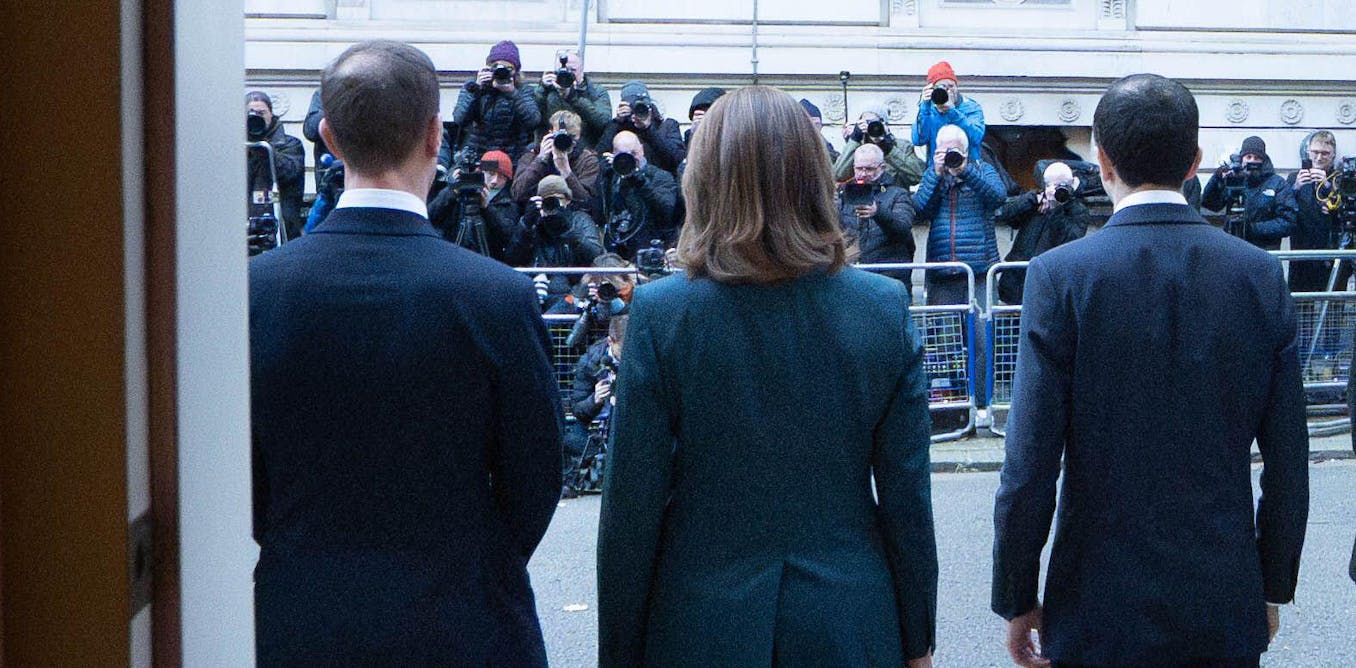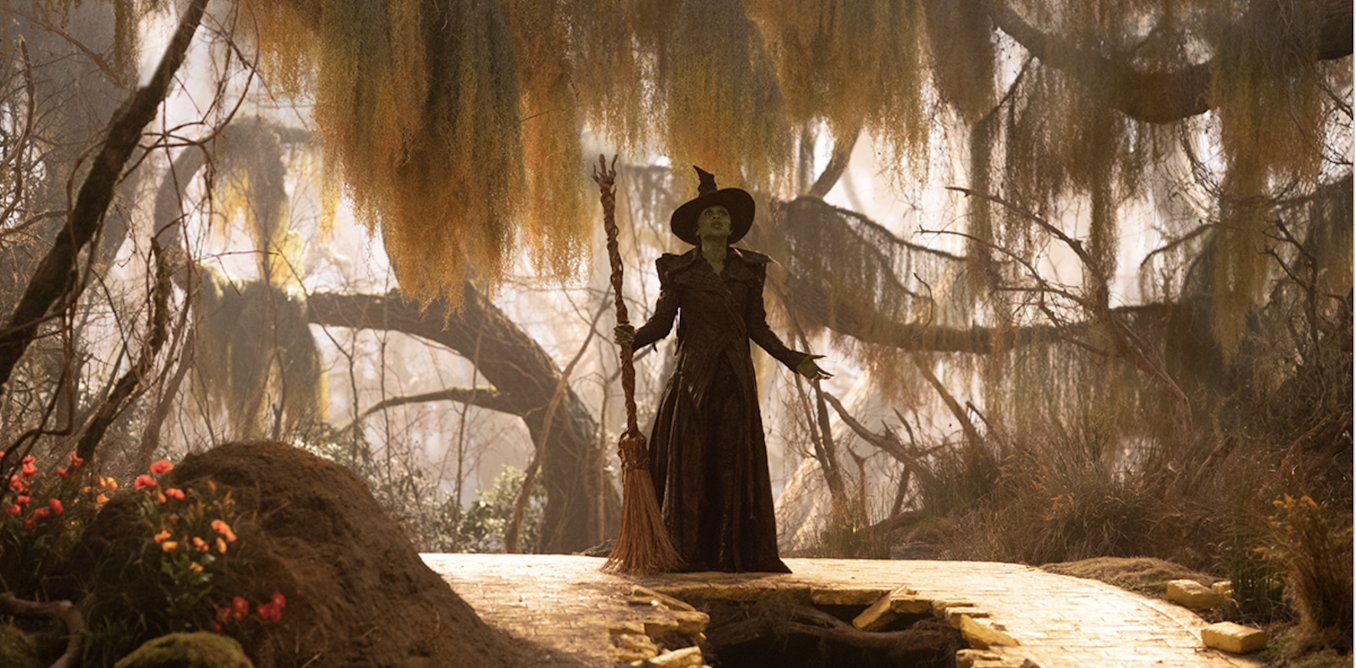When Charli XCX presented her creative team with her idea for the brat album artwork – black pixelated text splashed across a green backdrop – “we were skeptical,” says creative director Imogene Strauss. “She had a very clear vision for what she wanted, though…The goal wasn’t to make something that everyone is going to like, it was to make something that will make people think about why they don’t like it.”
And with time, Charli’s prediction that fans would have a strong reaction to the cover image proved correct. “There was a moment in this campaign where the public consensus online was that Charli’s album cover was lazy and ugly, which of course was her whole goal,” adds photographer Terrence O’Connor. “Charli’s natural instinct is to go against the grain, which is why she’s so inspiring.”
From the start of her career over a decade ago — when she notched three top 10s on the Billboard Hot 100 from 2013-2014 — Charli XCX has not just leaned left of center, but over time has become a new center entirely. And not only does her sixth album brat (out on Atlantic today, June 7) solidify as much, but it celebrates that fact — while also occasionally bemoaning it. (As she sings on “Rewind”: I used to never think about Billboard/But, now, I’ve started thinking again/Wondering ’bout whether I think I deserve commercial success.”)
Even before the album arrived, its rollout was accompanied by praise from pop peers across the spectrum. While backstage at Billboard’s Women In Music event this March, Katy Perry expressed her love for Charli, complimenting how “amazing” she sounded during her performance. (More recently, fans online have cited Charli as a reference point for Perry’s own album rollout, from the hyperpop typeface of KP6 to her fashion and photography). And just yesterday (Thursday, June 6), after listening through brat, Lorde wrote on her Instagram Stories that, “There is NO ONE like this b—h.”
As the creative team around Charli says, that singularity is exactly what drew them to her in the first place. “I’ve always been a hardcore pop music fan, but I never totally align with the aesthetics,” says Strauss. “I want something more challenging.” Stylist Chris Horan, who started working with Charli before the 2022 release of her fifth album Crash, shares a similar attraction. “We bonded over references of what makes a main pop girl not only iconic but immediately recognizable,” he says of meeting Charli. “Her look is bitchy and distinct. It’s never fully polished – there’s always something a little f–ked up.”
By riding on the outskirts of pop music for so long – dating back to her early days performing as a teen at illegal raves in London – Charli has ultimately paved a parallel path where counterculture can coexist with the genre. For her, the challenge is in deciding how much she cares about how that coexistence is received. As she told Billboard earlier this year in her Women In Music Powerhouse interview, “My big struggle is deciding whether I care more about being the biggest artist I can be commercially, or being critically sound. Then sometimes I land in this place of not caring about either of those things.”
Yet, that ambivalence is exactly what defines her influence and aesthetic, from the “lazy” brat album art to her “never fully polished” look. As Strauss believes, Charli is particularly resonating so much right now because fans and artists alike are over the “play it safe aesthetic of the 2010s.”
Charli, on the other hand, is not only comfortable with risk, but could teach a master class in curated mess, whether she’s trolling fans on X (formerly known as Twitter) or alluding to copycats on TikTok. As O’Connor says: “It really doesn’t matter if people copy our ideas, because next week we’ll have a whole batch of new ones… We just laugh and move on – unless we’re feeling fun and annoying, then she does something that gets her in trouble, but that’s also cool.”
But no matter how Charli’s every move has been received or replicated, it has all fueled the hyperpop hyperdream that was the brat rollout – from her viral Brooklyn Boiler Room rave in February, dubbed Party Girl (for which she wore an oversized shirt that read: “CULT CLASSIC”) to her widely-discussed “360” music video that arrived in May, in which she and her friends (including Chloe Cherry, Quenlin Blackwell, Julia Fox, Rachel Sennott and more) are pressed to find “a new hot internet girl” — or in other words, an influencer to join their ranks.
Strauss recalls the premiere for the video well, in large part because of something Charli said: “It’s hard to be ahead.” Reflecting on the remark now, Strauss says, “I think this is very true. Doing things first almost never means you’re going to be the biggest or most famous. Being the reference means you have to make choices that go against the status quo.”
Which is exactly what Charli has always done. And now, as a result, she has not only managed to make being anti-cool cool, but perhaps more importantly made an album undeniably assured and contagiously cocky. With lyrics like, “It’s okay to just admit that you’re jealous of me” (“Von Dutch”), the point of brat is not whether such declarations are true, but that an artist like Charli XCX is saying them at all.
As the opening lyric of “360” goes: “I went my own way and I made it.”
“She doesn’t need to abide by anyone’s rules – that makes her career so enviable to other artists,” says Horan. “A lot of people want to replicate the essence of Charli, but she truly is one of one.”

The post “How Charli XCX’s ‘Against the Grain’ Aesthetics Confound, Inspire & Create Copycats” by Lyndsey Havens was published on 06/07/2024 by www.billboard.com





































